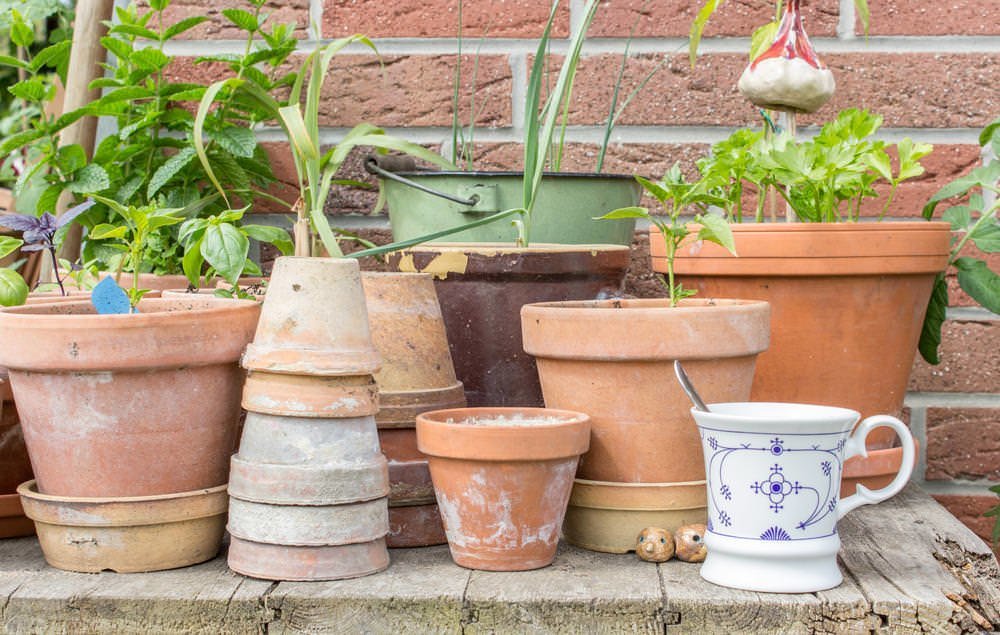If you have outdoor plants you plan to use for a patio garden, choosing the right containers can create a dilemma. It can seem as though your choices are endless and, if you need several, the cost can quickly become a factor.

Choosing the right planters can help ensure the success of your container garden. So, which pots are best? Each type has its pros and cons but some are better suited for your outdoor plants than others.
No. 1: Plastic Outdoor Planters
Affordable, durable and lightweight, plastic planters are often designed to mimic the appearance of their more expensive rivals. Plastic pots for outdoor plants are colorful, attractive and available in a dizzying array of styles, shapes and sizes.
The downside is that plastic outdoor planters can become brittle and break after a couple of years in summer’s direct sun and winter’s freezing temperatures.
No. 2: Terracotta (Clay) Planters
Terracotta, also known as clay, is a classic choice for container gardens.
The warm fired-earth tones of these outdoor planters complement the natural beauty of our Utah landscape. Available in wide range of styles and designs, terracotta pots are relatively inexpensive. And, these garden pots are heavy enough to resist toppling over in strong winds.
On the downside, clay pots break easily. And, because terracotta planters are porous, they lose moisture faster than other types of containers. This means that outdoor plants have to be watered more often, unless you prefer to paint or seal your clay pots and planters.
No. 3: Wood Outdoor Planters
Many gardeners love the warm, natural look of stained wood pots for their outdoor plants. Wood planters are also easy to paint – so, their color can be matched to the rest of the outdoor décor. Most wood garden plant containers can be left outside all year long.
The drawback of choosing wood pots is that, over time, they begin to break down. And, unless the garden planters are made of a rot-resistant wood, they’ll need to be lined or treated to prevent rapid decay.
No. 4: Metal Garden Planters
Bronze, copper, cast iron, galvanized zinc and stainless steel pots bring a modern, contemporary touch to a container garden. Rugged and durable, metal planters can feature eye-catching scrollwork, fluting and gorgeous, decorative patinas.
The one issue with using metal pots for outdoor plants is the high thermal transference of the material. Metallic surfaces absorb heat, which can cause plant roots to overheat. If your patio garden will be in full or partial shade for part of the day, you should be safe.
No. 5: Concrete Planters
Concrete pots are decorative and incredibly durable – they can resist wind and protect outdoor plants from frost. You can also find oversized concrete planters, which is a plus for anyone looking to grow patio trees or a sizeable container garden.
As for the minuses, concrete containers tend to be more expensive than other types of garden planters, and the choice of colors is limited. Also, these pots are quite heavy, so they can be difficult to move.
You can get around these problems, however, by painting your concrete planters and placing them on a wheeled plant dolly prior to adding your potting soil and plants.
If you would like more tips on choosing the right garden planters, the friendly staff at Millcreek Gardens, northern Utah’s favorite garden center, can offer expert advice. Visit us in Salt Lake City today to check out our vast selection of pots, potting soil, garden supplies and outdoor plants


